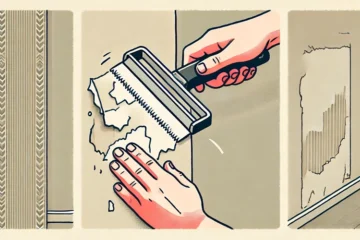How to Estimate Wallpaper Needs

There are several different methods for estimating the amount of wallpaper you need for your job. This one, from F. Schumacher & Co., is one of the easier examples. Once you have an estimate, discuss it with your wallpaper supplier: explain how you came up with the figure, and have them double-check it. You can also search online for “estimating wallpaper rolls” and easily find several quick calculators for doing the same job.
|
Ceiling Heights
|
||||||||||||
|
8′
|
9′
|
10′
|
11′
|
12′
|
||||||||
|
Room Size
|
Single Rolls Required to Cover Four Walls
|
Rolls to Cover Ceiling
|
||||||||||
|
8’×10′
|
14
|
14
|
16
|
18
|
20
|
4
|
||||||
|
10’×12′
|
16
|
18
|
20
|
22
|
24
|
4
|
||||||
|
12’×12′
|
18
|
20
|
22
|
24
|
26
|
6
|
||||||
|
12’×16′
|
20
|
22
|
26
|
28
|
30
|
8
|
||||||
|
12’×20′
|
24
|
26
|
30
|
32
|
34
|
10
|
||||||
|
14’×16′
|
22
|
24
|
28
|
30
|
32
|
10
|
||||||
|
14’×20′
|
24
|
28
|
32
|
34
|
38
|
12
|
||||||
|
16’×16′
|
24
|
26
|
30
|
34
|
38
|
14
|
||||||
|
16’×20′
|
26
|
30
|
32
|
36
|
40
|
14
|
||||||
|
16’×24′
|
30
|
32
|
36
|
40
|
44
|
18
|
||||||
Refining Your Estimate
Getting accurate estimates for simple room walls and ceilings isn’t very hard. Just take the number that you find above and divide it by two to get the number of double rolls you need. Then fine-tune your estimate by deducting one-half roll for every window, door, and fireplace opening.
Exceptions
The chart above won’t work for certain areas of the home, such as stairway walls and end walls under a cathedral ceiling. Here’s how to deal with them:
- Estimating stairway walls: These diagonal walls are just triangles that form one half of a standard rectangle. Measure the length of the wall and its height at the highest point. Multiply these together and divide this square footage by two.
- Estimating walls under cathedral ceilings: Measure the height of the highest wall and the lowest wall, add them together, and divide by two. This yields the average height for the four room walls


